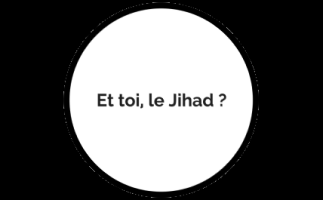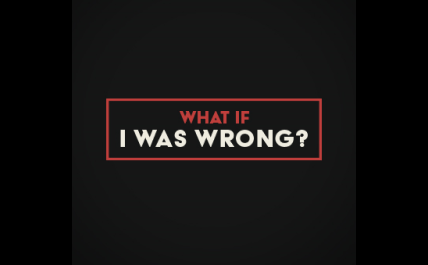
Entre Soeurs
A female focused video campaign aimed at delegitimising narratives of Islamist extremism.
A campaign with a clearly defined target audience that aims to promote critical, online engagement and to counter Islamist propaganda.

Initially entitled “Reparlons Jihad”, “Et toi, le Jihad ?” is an initiative run by a French citizen collective that works to counter Islamist propaganda. The initiative’s objectives are to prevent and combat violent jihad, to promote social cohesion and to encourage the development of critical online engagement. Reparlons Jihad (RPJ) was a satirical campaign, developed in partnership with an illustrator and promoted on Facebook over a period of three months, from May to July 2017.
Rather than focusing upon awareness raising and promotion among a broader, passive audience, RPJ defined a very precise audience: those that may be considering or are already even partially convinced by ideas linked to radical Islamism. By defining this specific audience, the campaign aimed to have an impact on an at-risk population, as well as to study the impact at a granular level. The objective was to spark debate and promote critical engagement online among a diverse audience that is interested in these themes or among those in opposition to mainstream thought in France. Each piece of content was composed of a satirical comic and an accompanying caption that was meant to spark discussion. Emphasis was placed on messages that attempted to discredit ISIS or highlight contradictions in ISIS’ narratives. After the comics were posted on Facebook, the comments and discussions that took place on each were moderated by RPJ. These were assessed as part of the evaluation of the campaign, but were also scanned for individuals displaying signs of radicalisation or support for extremism.
RPJ is also active on Instagram.
Challenge: Extremist Islamist groups are using social media to reach and recruit vulnerable young audiences in France.
Goal & Objective: To help prevent and combat violent jihad, Reparlons Jihad worked to encourage the development of critical online engagement amongst a young, at-risk audience in France. To accomplish this, the campaign’s main objective was to spark debate and promote critical engagement online among a diverse audience that is interested in these themes or among those in opposition to mainstream thought in France.
Target Audience: Men and women, aged 16-25, in France, with an interest in sensitive political issues (e.g., war in Syria, terrorism), radical Islamist influencers, and certain humanitarian pages focused on these subjects. Rather than focusing upon awareness raising and promotion among a broader, passive audience, RPJ defined a very precise audience: those that may be considering or are already even partially convinced by ideas linked to radical Islamism.
Message: Emphasis was placed on messages that attempted to discredit ISIS or highlight contradictions in ISIS’ narratives.
Tone: RPJ successfully used satire to soften their message and make their criticisms more approachable.
Content: Each piece of content was composed of a satirical comic and an accompanying caption that was meant to spark discussion
Platform: Facebook
Impact:
In addition to the impact that is directly visible via Facebook analytics, the engagement was largely positive, with 68% of the audience having interacted positively with the content, a favourable sign for the campaign as a whole. This can be confirmed by the messages received via Facebook messenger, 88% of which were positive. The campaign also seems to have played a role in the mobilisation of the audience, as many users contacted the page to flag extremist content.
Negative reactions represented 8% of all comments and reveal a part of the audience that is opposed to the campaign. While they are never pleasant to deal with, negative responses can actually be an indicator of good targeting and can create opportunities for valuable engagements. When speaking to an at-risk audience with content that directly contradicts the ideology they may already be consuming, one should expect that individuals within this audience will challenge the campaign or defend their own ideas. Reaching these individuals at all means the content got to audiences that may need to see it the most and the interactions with them, if handled well, give the campaign a chance to challenge an adherent of the ideology directly. Just remember, in these situations you are not just speaking to one person who is unlikely to change their position, but to everyone following the exchange.
Comments of a conspiratorial nature (7%), while a non-trivial portion of total engagement, decreased over the course of the campaign, likely thanks to the factual yet humoristic tone of the posts.
[1] Facebook provides this qualitative indicator that allows the measurement of the relevance of content posted by pages. This indicator is based on various factors, such as positive reactions (e.g., likes, clicks, video views, etc.) from those that view the content, as well as negative reactions (e.g., clicking on “I do not want to see this content”)

A female focused video campaign aimed at delegitimising narratives of Islamist extremism.

“ONE QUESTION, ONE CAMPAIGN. What If I Was Wrong?”

Sign up to access the Toolkit. Registration is completely free and gives you access to a wealth of guidance and resources to ensure your campaign achieves maximum impact!
Sign Up